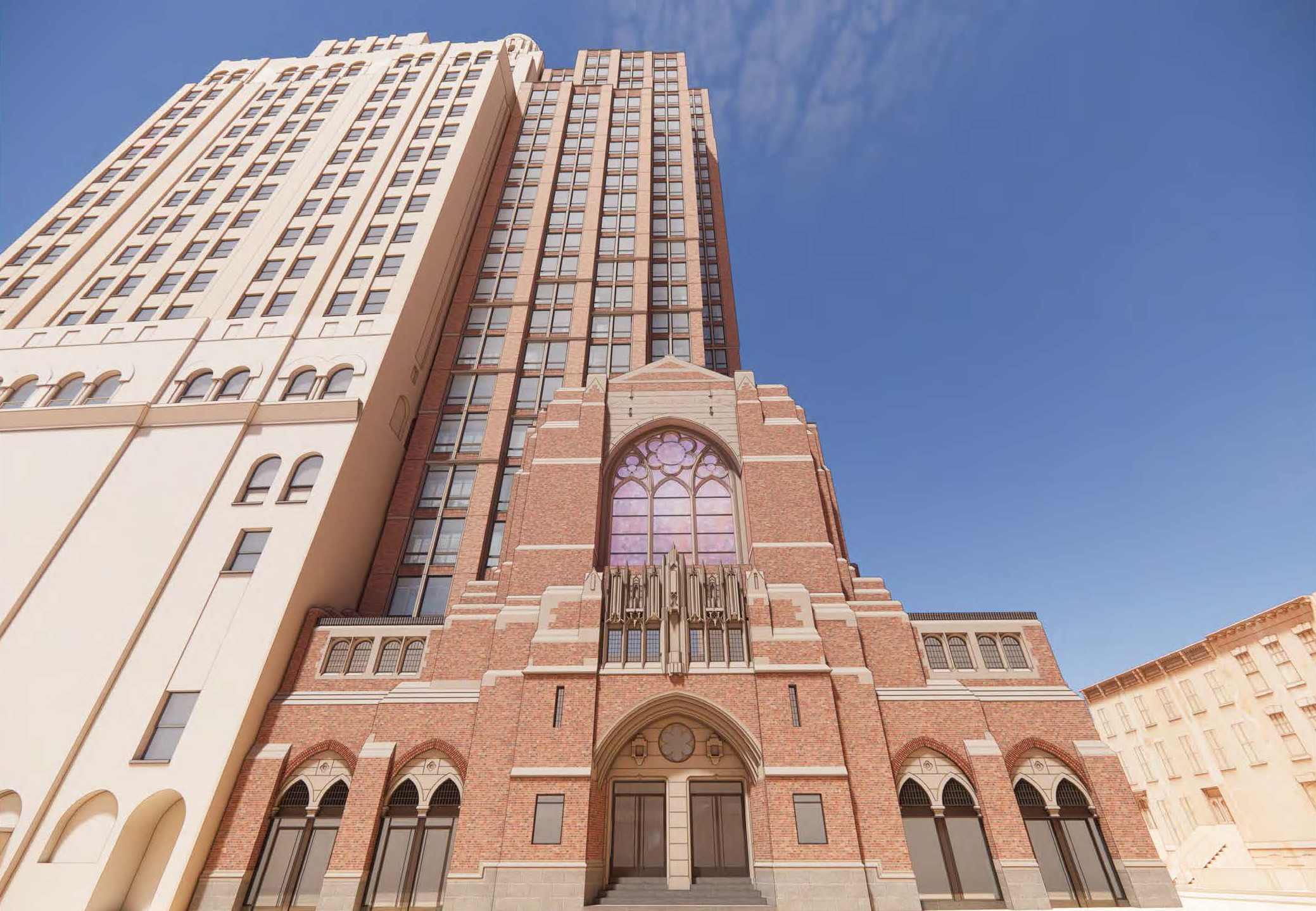Walkabout: Mr. Seney's Hospital, Part 2
(Harper’s Weekly: The Panic of 1884 on Wall Street) George Ingraham Seney was an extremely successful, hard-working man. He rose from humble bank teller to major bank president. He made millions on the stock market, and in the railroad business. He was on the boards of insurance companies, financial trusts, and banks. And, in the…


(Harper’s Weekly: The Panic of 1884 on Wall Street)
George Ingraham Seney was an extremely successful, hard-working man. He rose from humble bank teller to major bank president. He made millions on the stock market, and in the railroad business. He was on the boards of insurance companies, financial trusts, and banks. And, in the tradition of his Methodist minister father, he practiced what he preached, and gave generously to the poor and less fortunate. A chronicling of his life can be found in Part l. He helped many worthy causes, and gave away millions of dollars, but the cause that was dearest to his heart was that of the Methodist Episcopal Hospital of Brooklyn, also known as the Seney Hospital. In 1881, he purchased 16 lots of land in Park Slope on 7th Avenue through to 8th Avenue, from 6th to 7th Streets, and donated them to the city, along with a starter sum of $100,000, for the building of a hospital, one that would be open to all, and a tangible representation of the mission of the Methodist Episcopal Church in society. It was quite a gift.
In an age of ostentatious robber baron excesses, George Seney was quietly filthy rich. He lived in Brooklyn Heights, in several very nice large houses, before settling down in number 2 Montague Terrace, overlooking the harbor. He and his wife had a large family; nine children, with six daughters and three sons. There, in this large mansion, he had a special wing dedicated to his love of art; Mr. Seney was a prolific collector of paintings, specializing in European and American works of the 19th century, for his time, contemporary art. He had many paintings from the French Barbizon Landscape School, with works by painters Narcisse Diaz, Theodore Rousseau and Jean-Francoise Millet, among others. Their naturalistic works were the forerunners of the Impressionists. In 1883, as part of a fundraiser for the Sheltering Arms Nursery, Seney lent 119 of his works, his entire collection, to a show at the Brooklyn Art Association, to raise money for the orphanage. The Brooklyn Eagle listed the names and painters of all 119 canvases. The Seney Collection was the highlight of the show, the largest private collection most of Brooklyn’s society had ever seen outside of a museum.
By the spring of 1884, three of the ten buildings in the Seney complex were almost done. Work was set to begin the next group, and then the bottom dropped out of the stock market, leading to the Panic of 1884. Here’s what happened, in a nutshell a very familiar nutshell, actually. The Panic of 1884 occurred because of the relationships between the stock market and the banks. Stocks and bonds were capitalizing everything at the time; the building of railroads, all kinds of manufacturing, municipal and public improvement, while commercial credit was extended to the point that many in finance feared that the intrinsic value of these securities was stretched to the point of worthlessness. Meanwhile, in NYC, all of the banks; national, state and private, were intimately involved in Wall St. stock affairs, even more so than is allowed today. A large portion of the loans made by the banks and bankers of New York were based upon the security of stocks and bonds. These, in turn, were also quite speculative, and once in a while, they were called in. Added to this, in Europe, fears that America was going off the gold standard caused a panic there, which made American banks lose much needed hard currency, causing the national banks in New York, with the tacit approval of the US Treasury, to call in loans. Many of the over-extended smaller banks started to fall, and runs on the banks began in May of 1884.
On May 14, 1884, an 11am run on the Metropolitan Bank, located in the financial district, caused that institution to close. The bank would re-open the next day, and did so with George Seney’s resignation on the table. As president of the bank, he had been free to wheel and deal with other banks and financial institutions, and make all kinds of institutional investments, some of which had been highly risky. Seney also owned a quarter of the stock of the smaller, Brooklyn-based Atlantic Savings Bank, and was regarded as more influential in the running of that institution than the officers and board. He led Atlantic to invest in the same ventures that Metropolitan did, and as a consequence, when Metropolitan went down, so did the Atlantic Bank, but it was never to rise again. Another institution that Seney was a trustee in was the Firemen’s Trust Insurance Company. They had lent Mr. Seney over $140K in personal loans, to which Metropolitan Bank Stock had been used as collateral. After the panic, the bank stock was practically worthless, and the Insurance company could not absorb the loss, and closed its doors that summer.
The Panic of 1884 only lasted about a week, but its effects would reverberate for years. Two NYC bank presidents lost their jobs, including George Seney. One major bank, his Metropolitan, closed for a day, several smaller banks totally failed, and ten brokerage firms fell. The corrections in the markets were seen as necessary, as a pruning, to ensure future growth. Banks began to pool their funds for future occurrences of this kind, the forerunner of later rules that would one day create the FDIC. For George Seney, it was personally devastating, as much of his own personal fortune was tied into failed speculations. He also felt the burden of personal and professional loans and commitments he no longer had the cash to cover. He was unable to donate any more funds to the Seney Hospital funds, and had the embarrassment of having a lien taken out against him by one of the contractors, for unpaid bills. Fortunately, the Methodist Church, and many of the wealthy of Brooklyn would take over, raising funds to continue building, and the hospital continued to grow.
George Seney had to sell almost everything, in order to pay off his creditors. The first thing to go was a plot of land in the Heights that he had bought, intending to one day build a new home. Over the next year, he would sell his house on Montague Terrace and his greatest treasures, his vast art collection. The press went from slavishly fawning over everything he did to writing editorials blasting Seney for his business practices, and an investigation into the fall of the Atlantic Bank was on the horizon. In the summer of 1885, at his doctor’s orders, with his wife and some of his children already preceding him, George Seney left Brooklyn for Europe, for a long vacation. Some of his critics thought he would never come back. They were very wrong.
Next time: the conclusion of our story, and the legacy of George Seney’s generosity.





“your name was Beaufort when he covered you with jewels and it is still Beaufort now that he has covered you with shame.”
rebuke from the wealthy matriarch to the disgraced financier’s wife when she attempts to borrow money from her by recalling their shared lineage and old family name.
-Age of Innocence
They lived large and fell hard.
Looking forward to reading the erst of his roller coaster ride 🙂
capitalism was a boom or bust business. People lived on the edge though compared to today’s shenanigans these guys were very conservative. Edith Wharton’s “Age of Innocence” deals with the boom and bust of the era. One of the main characters is a self-made millionaire of mysterious provenance who collects fleshy French art and whose enormous house was built with a ballroom -an unheard of extravagance.
I’ll be back on Thursday.